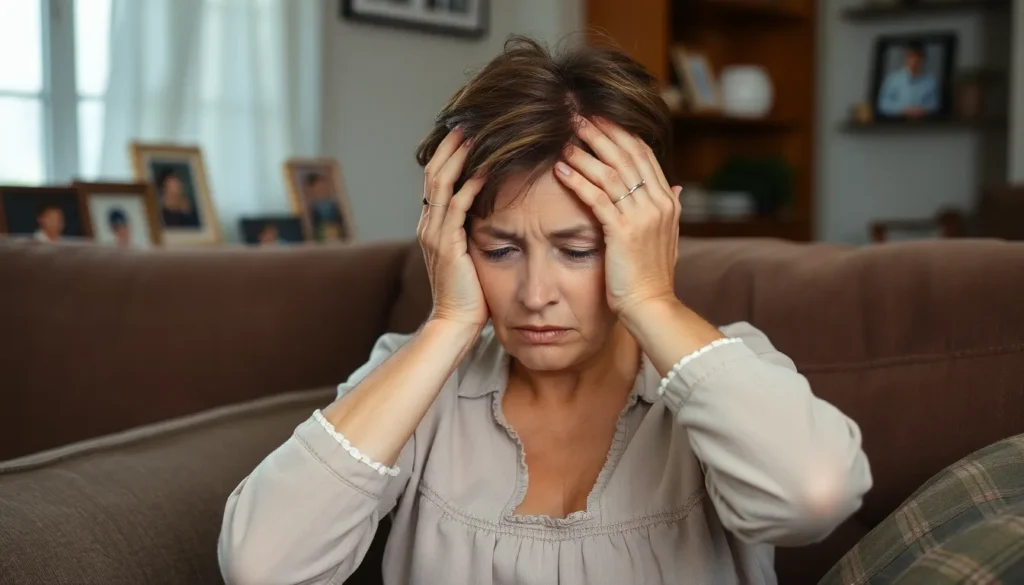Table of Contents
ToggleImagine waking up one day with a headache so intense it feels like a marching band is practicing in your skull. While most headaches are just annoying nuisances, a stroke headache can be a whole different ball game. It’s like your body’s way of sending an urgent memo: “Hey, something’s seriously wrong here!”
Understanding what a stroke headache feels like is crucial. It could mean the difference between a quick trip to the doctor and a more serious situation. Symptoms can vary, but they often include sudden, severe pain that doesn’t play nice with over-the-counter pain relievers. So, if you or someone you know experiences a headache that feels like a sledgehammer to the head, it’s time to pay attention. Let’s dive into the details and uncover the signs that could save a life.
What Does a Stroke Headache Feel Like
A stroke headache presents itself as an intense and sudden pain. Individuals often describe it as the worst headache they’ve ever experienced. Severity typically escalates quickly, making it feel distinct from migraines or tension headaches.
This type of headache may accompany additional symptoms, such as confusion, difficulty speaking, or weakness in one side of the body. Visual disturbances, like blurred vision or sudden loss of sight, often manifest as well.
Characteristics of the pain can vary; it may feel throbbing, sharp, or even pressure-like. Many report that this headache does not improve with over-the-counter pain relievers.
While some headaches subside after resting, stroke headaches tend to persist, demanding immediate attention. Sudden onset, particularly if there’s no prior history of severe headaches, signals a potential emergency.
Many people may also experience nausea and vomiting in correlation with the headache. These additional symptoms often heighten the urgency for seeking medical evaluation.
Recognizing these distinct sensations could lead to timely intervention. Immediate medical attention can significantly impact outcomes after a stroke. Awareness of these symptoms is vital for ensuring quick response and treatment.
Types of Headaches Associated with Stroke

Recognizing the type of headache associated with a stroke can facilitate prompt medical intervention. Common types include throbbing pain and dull aching.
Throbbing Pain
Throbbing pain often characterizes stroke headaches. Intensity escalates rapidly, making it feel unbearable for the person experiencing it. This type of pain resembles a pulsating sensation, similar to that of a severe migraine. In many cases, individuals report that this pain does not respond to typical over-the-counter medications. Accompanying symptoms may include confusion, difficulty communicating, or altered vision. The throat and neck may feel tense and tighten with each painful pulse. Such experiences underline the critical need for immediate evaluation in the event of sudden onset.
Dull Aching
Dull aching presents a different experience in stroke headaches. While it may feel less intense than throbbing pain, it can still be persistent and nagging. Many describe this sensation as a heavy weight in the head. This type of ache contrasts with typical tension headaches, which might improve with rest. Individuals might also notice it intertwining with fatigue or dizziness. Although less acute, this dull pain can significantly impact daily activities. Recognizing this symptom alongside others, such as weakness or visual changes, is vital for timely assessment and care.
Symptoms Accompanying Stroke Headaches
Stroke headaches present with distinct symptoms that require urgent attention. Recognizing these signs can significantly impact outcomes.
Sudden Onset
Sudden onset defines stroke headaches, characterized by immediate, intense pain. This pain closely resembles the worst headache one might experience. Patients often report that the headache develops in an instant, catching them off guard. Such abrupt changes signal a potential medical emergency. The sharpness of the pain typically surpasses the discomfort of tension or migraine headaches. It may continue to escalate, further indicating a critical situation that needs rapid assessment.
Nausea and Vomiting
Nausea and vomiting frequently accompany stroke headaches, compounding patient distress. This combination often heightens the urgency for medical evaluation. Individuals experiencing these symptoms may feel overwhelmed; the physiological response can occur alongside severe pain. It’s not uncommon for nausea to intensify as the headache worsens. In some cases, these symptoms occur without any prior gastrointestinal issues. Immediate recognition of nausea and vomiting in conjunction with headache pain can help facilitate timely medical intervention.
Differences from Other Headaches
Stroke headaches differ significantly from other types of headaches. Recognizing these differences is crucial for prompt medical attention.
Migraine vs. Stroke Headaches
Migraine headaches often feature a throbbing pain typically on one side of the head. Symptoms may include sensitivity to light and sound, along with nausea. Stroke headaches, however, present as sudden and severe pain that resembles the worst headache imaginable. While migraines can cause debilitating discomfort, stroke headaches escalate quickly and can occur without a history of severe headaches. Additionally, confusion, difficulty speaking, and visual disturbances accompany stroke headaches but are not common with migraines. Recognizing these distinct features can help differentiate between a migraine and a potential stroke.
Tension Headaches vs. Stroke Headaches
Tension headaches describe a dull, aching pain that feels like pressure around the head. They usually develop gradually and can be relieved with rest or over-the-counter medications. In contrast, stroke headaches emerge suddenly and are characterized by intense, unyielding pain. Unlike tension headaches, which may linger, stroke headaches often signal a medical emergency. Accompanying symptoms, such as weakness, confusion, and visual changes, further highlight the urgent nature of stroke headaches. Understanding these differences promotes quicker identification and response to possible stroke symptoms.
When to Seek Medical Attention
Sudden changes in headache intensity warrant immediate medical evaluation. Recognizing the signs of a stroke headache can be crucial for timely treatment. Immediate medical attention is essential when experiencing severe, sudden headaches, especially if they present alongside confusion, difficulties speaking, or weakness on one side of the body. Persistent nausea and vomiting often indicate a need for urgent care, as these symptoms can accompany stroke headaches.
Severe pain described as the worst headache ever felt should not be ignored. Attention is necessary when symptoms differ from a person’s typical headache history. For individuals who experience new or atypical headache patterns, especially those that escalate quickly, emergency services might be required. Healthcare professionals should assess any headache accompanied by visual disturbances, such as blurred vision or sudden loss of sight.
Evaluation by medical staff can determine the urgency of symptom presentation. Stroke can occur with or without warning signs, making awareness of these changes critical. As soon as any concerning symptoms arise, seeking immediate medical help can significantly improve outcomes. Delays in treatment may lead to complications, emphasizing the importance of quick action when faced with sudden and severe headache symptoms.
Recognizing the signs of a stroke headache is crucial for ensuring timely medical intervention. The intense pain and accompanying symptoms can signal a serious medical emergency that requires immediate attention. Individuals should never ignore sudden changes in headache patterns or the onset of severe pain. Understanding the differences between stroke headaches and other types of headaches can empower individuals to act quickly. When faced with symptoms like confusion, weakness, or visual disturbances, seeking emergency care can make a significant difference in outcomes. Awareness and prompt action can ultimately save lives.







